Aisha Sarwari in Dawn:
 The difference between good art and bad art is that good art is subtle. Pakistan struggles to do subtle. There is certainly your everyday slapstick comedy, the tragic heroine, and the flippantly violent hero. But no, Pakistan is not at all good at subtle, which is why Sarmad Khoosat’s Zindagi Tamasha is banned. To put it succinctly, this film is about how a non-minority becomes a minority. The protagonist is a religious devout, who gets an instant rogue status for the crime of loving to dance effeminately. Had our hero danced unnoticed, he would have survived, but he gets caught [on camera] by the ridicule-addicted world of viral social media take downs and cancel-culture. Zindagi Tamasha is old world meets new, but it’s also the worst of both worlds.
The difference between good art and bad art is that good art is subtle. Pakistan struggles to do subtle. There is certainly your everyday slapstick comedy, the tragic heroine, and the flippantly violent hero. But no, Pakistan is not at all good at subtle, which is why Sarmad Khoosat’s Zindagi Tamasha is banned. To put it succinctly, this film is about how a non-minority becomes a minority. The protagonist is a religious devout, who gets an instant rogue status for the crime of loving to dance effeminately. Had our hero danced unnoticed, he would have survived, but he gets caught [on camera] by the ridicule-addicted world of viral social media take downs and cancel-culture. Zindagi Tamasha is old world meets new, but it’s also the worst of both worlds.
We are a country that prefers staying within social constructs. A daughter must be dutiful towards a father. The respectable must not have whims. The wives must be able-bodied. The community must have only men and women. This is the only script that the gatekeepers of morality will accept — the grossly hypocritical. The utterly unrealistic. The fashionable lie. The rest is punishable.
More here. (Note: Available on YouTube. Do watch this excellent film)

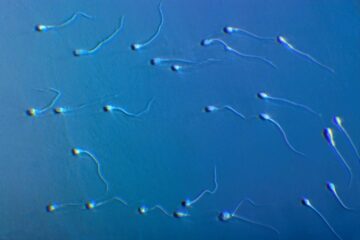 A
A  J
J For more than four years, reflexive partisan politics have derailed the search for the truth about a catastrophe that has touched us all. It has been estimated that
For more than four years, reflexive partisan politics have derailed the search for the truth about a catastrophe that has touched us all. It has been estimated that  After the murder of George Floyd in May 2020, former NBA player
After the murder of George Floyd in May 2020, former NBA player 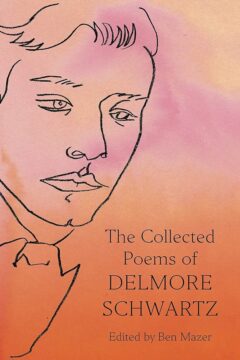 When Schwartz comes up in conversation today, two things are typically remarked of him. First, he is a man whose reputation has eclipsed his work, his stature as a poet having surrendered to the clamor for myth. Second, this myth is one of vertiginous and scandalous decline. Delmore Schwartz: an American tragedy. Both commonplaces have the unfortunate merit of being true.
When Schwartz comes up in conversation today, two things are typically remarked of him. First, he is a man whose reputation has eclipsed his work, his stature as a poet having surrendered to the clamor for myth. Second, this myth is one of vertiginous and scandalous decline. Delmore Schwartz: an American tragedy. Both commonplaces have the unfortunate merit of being true.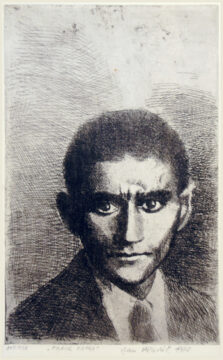 The coincidence of the centenary of Kafka’s death, on 3 June, and the publication of the first complete, uncensored
The coincidence of the centenary of Kafka’s death, on 3 June, and the publication of the first complete, uncensored 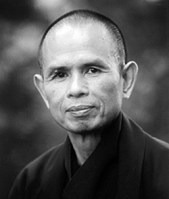 What are the most basic elements of love and how can we manifest them in our lives and our relationships? This is the question that Thich Nhat Hanh tackles in his short book, ‘True Love’. Looking at human love through the lens of Buddhist teaching, he breaks it down into four aspects: loving-kindness, compassion, joy and freedom and uses his direct and simple style to advise us how to put these elements to work in our own lives.
What are the most basic elements of love and how can we manifest them in our lives and our relationships? This is the question that Thich Nhat Hanh tackles in his short book, ‘True Love’. Looking at human love through the lens of Buddhist teaching, he breaks it down into four aspects: loving-kindness, compassion, joy and freedom and uses his direct and simple style to advise us how to put these elements to work in our own lives. 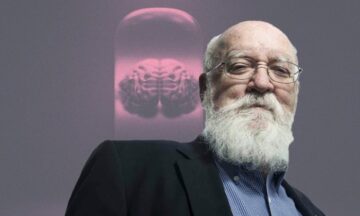 When Daniel Dennett’s essay collection “Brainstorms” was published in 1978, the interdisciplinary field of cognitive science was just emerging. Dennett was a young scholar who wanted to get philosophers out of their armchairs and into conversations with psychologists, linguists, and computer scientists. “I tried in ‘Brainstorms’ to write about the problems in language accessible to all serious thinkers, as jargon-free as possible, with lots of examples,” he writes in the preface to
When Daniel Dennett’s essay collection “Brainstorms” was published in 1978, the interdisciplinary field of cognitive science was just emerging. Dennett was a young scholar who wanted to get philosophers out of their armchairs and into conversations with psychologists, linguists, and computer scientists. “I tried in ‘Brainstorms’ to write about the problems in language accessible to all serious thinkers, as jargon-free as possible, with lots of examples,” he writes in the preface to  Scientists have successfully developed a new, controllable prosthetic extra thumb designed to enhance productivity.
Scientists have successfully developed a new, controllable prosthetic extra thumb designed to enhance productivity.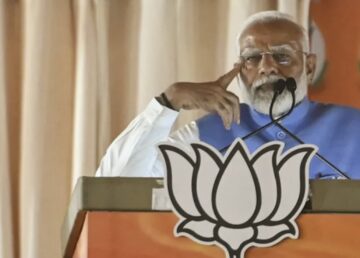 At the dawn of the twenty-first century India’s intellectual classes professed a cautious optimism – verging at times on self-congratulation – about the nation’s tryst with democracy. For many, the unruly coalition governments of the late 1990s and early 2000s reflected the deepening of democratic norms and a shared commitment to the peaceful transfer of power. Others pointed to high voter turnouts – especially among the poor – and the rise of elected representatives from hitherto subordinated castes as proof that democracy had been profoundly vernacularized.
At the dawn of the twenty-first century India’s intellectual classes professed a cautious optimism – verging at times on self-congratulation – about the nation’s tryst with democracy. For many, the unruly coalition governments of the late 1990s and early 2000s reflected the deepening of democratic norms and a shared commitment to the peaceful transfer of power. Others pointed to high voter turnouts – especially among the poor – and the rise of elected representatives from hitherto subordinated castes as proof that democracy had been profoundly vernacularized.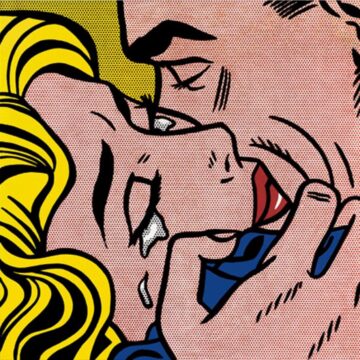 At the heart of Pop Art, Lichtenstein adeptly appropriated and reimagined iconic symbols, from Mickey Mouse to love and war comics, to popular advertising motifs. Through his masterful reinterpretations, he challenged conventional notions of high and low culture, inviting viewers to reconsider the significance of everyday imagery in the realm of art.
At the heart of Pop Art, Lichtenstein adeptly appropriated and reimagined iconic symbols, from Mickey Mouse to love and war comics, to popular advertising motifs. Through his masterful reinterpretations, he challenged conventional notions of high and low culture, inviting viewers to reconsider the significance of everyday imagery in the realm of art.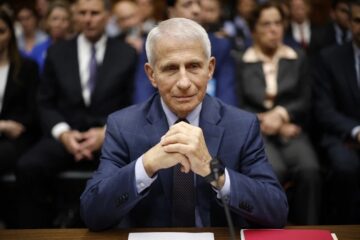 Anthony Fauci, the former head of the US National Institute of Allergy and Infectious Diseases (NIAID), emphatically fended off allegations at a Republican-led hearing in Washington DC today that his agency funded research that created the COVID-19 pandemic or that he coordinated a cover-up of the pandemic’s origins, calling the claims “simply preposterous”. The 3 June session was one of the most anticipated hearings hosted by the US House of Representatives Select Subcommittee on the Coronavirus Pandemic. The subcommittee has held 27 hearings or briefings over the past 15 months to examine the federal government’s response to the pandemic and
Anthony Fauci, the former head of the US National Institute of Allergy and Infectious Diseases (NIAID), emphatically fended off allegations at a Republican-led hearing in Washington DC today that his agency funded research that created the COVID-19 pandemic or that he coordinated a cover-up of the pandemic’s origins, calling the claims “simply preposterous”. The 3 June session was one of the most anticipated hearings hosted by the US House of Representatives Select Subcommittee on the Coronavirus Pandemic. The subcommittee has held 27 hearings or briefings over the past 15 months to examine the federal government’s response to the pandemic and 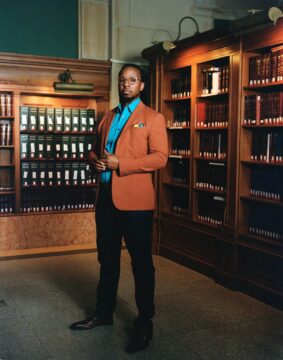 Ibram X. Kendi has a notebook that prompts him, on every other page, to write down “Things to be grateful for.” There are many things he might put under that heading. First and foremost, his wife and two daughters, and his health, having made it through Stage 4 colon cancer in his 30s — a diagnosis with a 12 percent survival rate. Tenure at Boston University, where Martin Luther King Jr. earned his doctorate in theology. A National Book Award, and a MacArthur “genius” grant for “transforming how many people understand, discuss and attempt to redress America’s longstanding racial challenges.” Then there were the millions of people who bought “How to Be an Antiracist,” the first of five of his books to take the No. 1 spot on the New York Times best-seller list. But he was particularly grateful to the readers who wrote to him to say his work changed them for the better.
Ibram X. Kendi has a notebook that prompts him, on every other page, to write down “Things to be grateful for.” There are many things he might put under that heading. First and foremost, his wife and two daughters, and his health, having made it through Stage 4 colon cancer in his 30s — a diagnosis with a 12 percent survival rate. Tenure at Boston University, where Martin Luther King Jr. earned his doctorate in theology. A National Book Award, and a MacArthur “genius” grant for “transforming how many people understand, discuss and attempt to redress America’s longstanding racial challenges.” Then there were the millions of people who bought “How to Be an Antiracist,” the first of five of his books to take the No. 1 spot on the New York Times best-seller list. But he was particularly grateful to the readers who wrote to him to say his work changed them for the better.